Protected Under
Antiquities Act 1975
31°37'15.8"N 74°17'40.4"E
Antiquities Act 1975
Nur Jahan’s tomb uniquely mirrors the flat-roofed design of her husband Jahangir’s tomb, symbolizing their lasting connection
The Best Time to Visit Punjab Province is Year long as it has bearable Cold winters and Hot Summers. However, Summers can get really Hot and precautions are recommended during Daytime visits.


The Tomb of Nur Jahan is an iconic Mughal-era monument located in Shahdara, Lahore, built for Empress Nur Jahan, the chief consort and favored wife of Emperor Jahangir. This tomb is situated near the mausoleum of Emperor Jahangir and the Tomb of Asif Khan, her brother, in a historic Mughal Garden complex . Nur Jahan, born as Mehr-un-Nisa and honored with the title Nur Jahan ("Light of the World"), was a prominent figure in Mughal history, wielding considerable influence during Jahangir's reign. Often regarded as the true power behind the throne, her political acumen and role in governance led many to view her as the de facto ruler of the empire in her time. Jahangir himself affectionately called her Nur Mahal ("Light of the Palace"), and Nur Jahan ("Light of the World"), reflecting her integral position in the court and his life.
Following her death in 1645, Nur Jahan was buried in the tomb she had commissioned for herself. Completed over four years at a cost of 300,000 rupees, the tomb originally featured a marble cenotaph engraved with the ninety-nine attributes of Allah. However, these inscriptions were removed during the Sikh period and repurposed for the Golden Temple in Amritsar. This tomb stands as a monument and symbol to her lasting legacy and influence within the Mughal Empire.
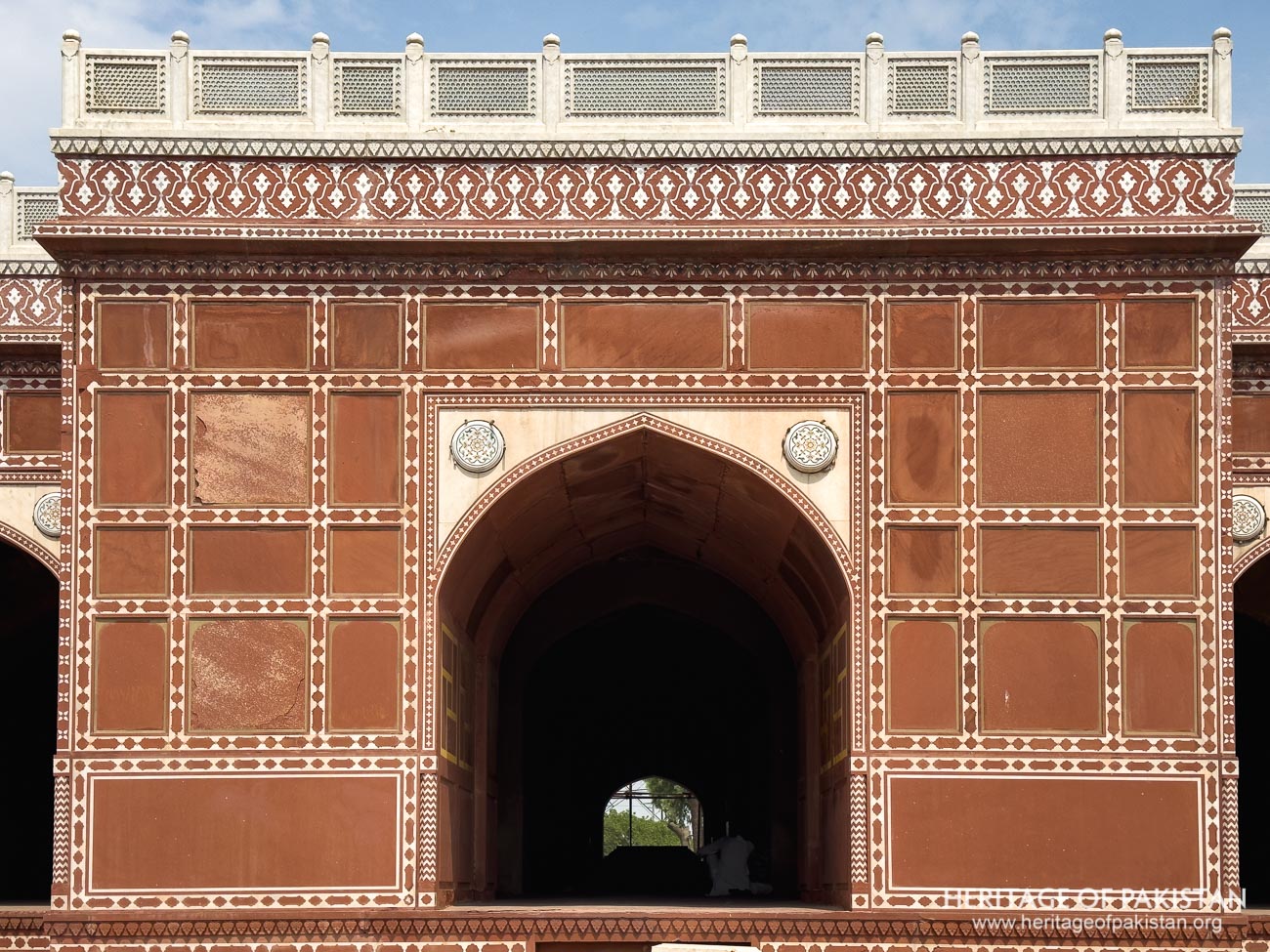 Marble Inlay work in Red Sandstone
Marble Inlay work in Red Sandstone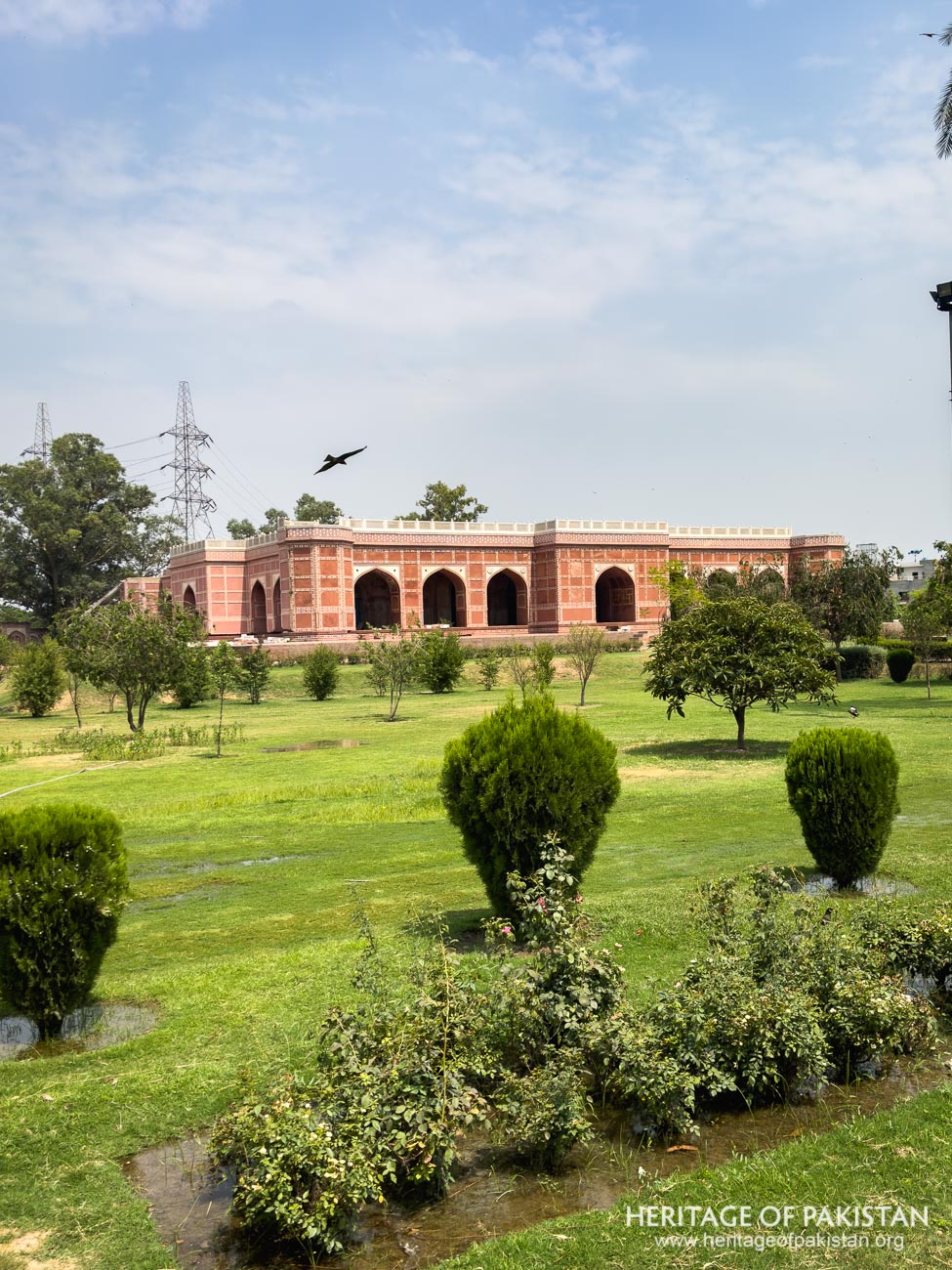
Nur Jahan, born Mehr-un-Nisa ("Sun of Women") in Kandahar, Afghanistan, was the daughter of Mirza Ghiyas Beg and Asmat Begum, Persian nobles who had fled from Safavid Iran to seek a better life under the patronage of Mughal Emperor Akbar. Her family, originally from Tehran, faced severe hardships following the death of Ghiyas Beg’s father, leading to their migration to India. During their difficult journey, they were robbed, and with limited resources, including two mules. Upon reaching Kandahar, Asmat Begum gave birth to Nur Jahan, and due to extreme destitution, the newborn was briefly abandoned on the roadside. However, Malik Masud, a compassionate caravan leader passing by, took the child in, employing her mother to care for her, which ultimately connected Ghiyas Beg’s family to Emperor Akbar’s court.
Nur Jahan was raised in the Mughal harem, where her beauty, intelligence, and grace became widely recognized. Although Prince Salim, later Emperor Jahangir, showed interest in her from an early age, she first married a Turkman nobleman, Ali Quli Beg, later known as Sher Afghan ("Lion Queller"). According to historian Muhammad Latif in Lahore: Its History, Architectural Remains, and Antiquities, after Jahangir ascended the throne, he expressed his desire to marry Nur Jahan by sending Qutub-ud-din, the newly appointed governor of Bengal, to convey his intentions. In a violent confrontation, Sher Afghan killed Qutub-ud-din and was killed in turn. Widowed, Nur Jahan spent four years in mourning and seclusion in Agra before eventually marrying Jahangir in 1611, becoming his twentieth and final wife. Jahangir was extremely fond of her and later reflected, "Before I married her, I never knew what marriage really meant."
With her marriage to Jahangir, Nur Jahan's family’s fortunes transformed. Her father, Ghiyas Beg, was appointed Prime Minister, her elder brother Mirza Abu Talib became Governor of Bengal, and her other brother, Mirza Abul Hassan (Asif Jah), gained military command. Asif Jah’s tomb is located near those of Nur Jahan and Jahangir, forming a unique familial burial complex. Although Nur Jahan bore no children with Jahangir, her influence was unmatched in the court until Jahangir's death. Shah Jahan, Son of Emperor Jahangir, later granted her an annual pension of two lakh rupees. It is widely believed that Nur Jahan personally designed Jahangir’s tomb, which was constructed using funds from the imperial treasury.
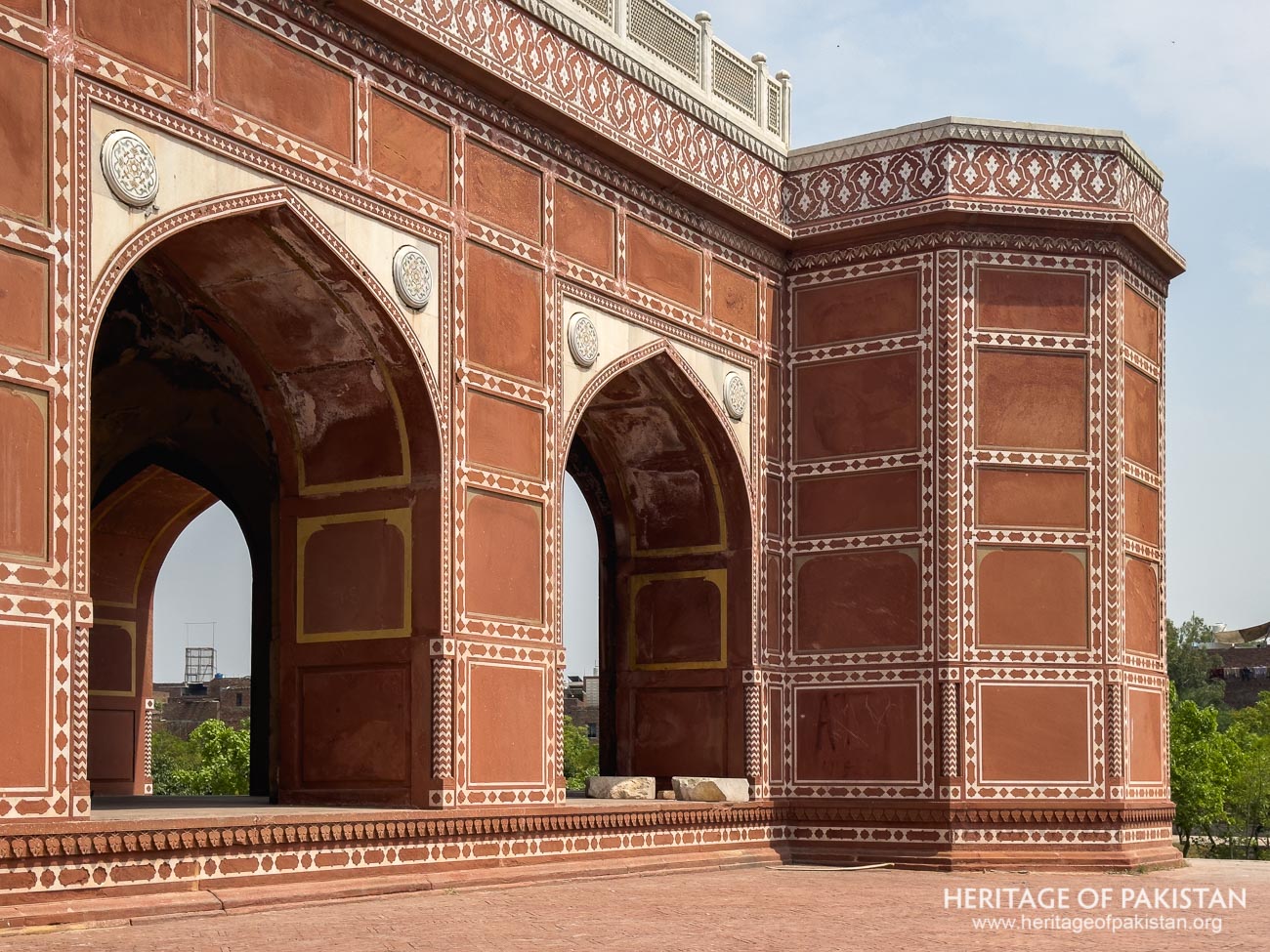 Beautiful Red Sandstone and Pietra Dura Marble work
Beautiful Red Sandstone and Pietra Dura Marble work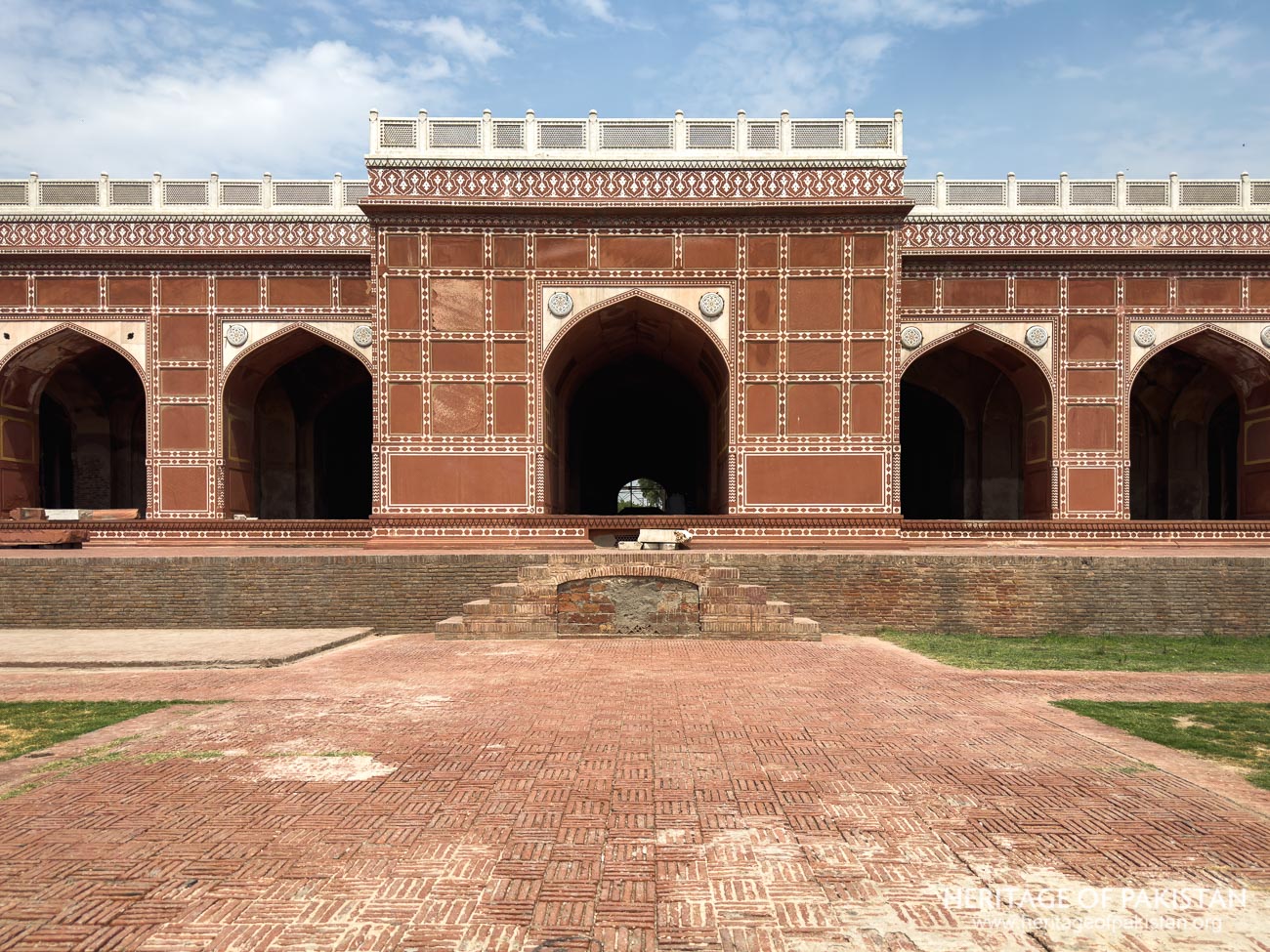
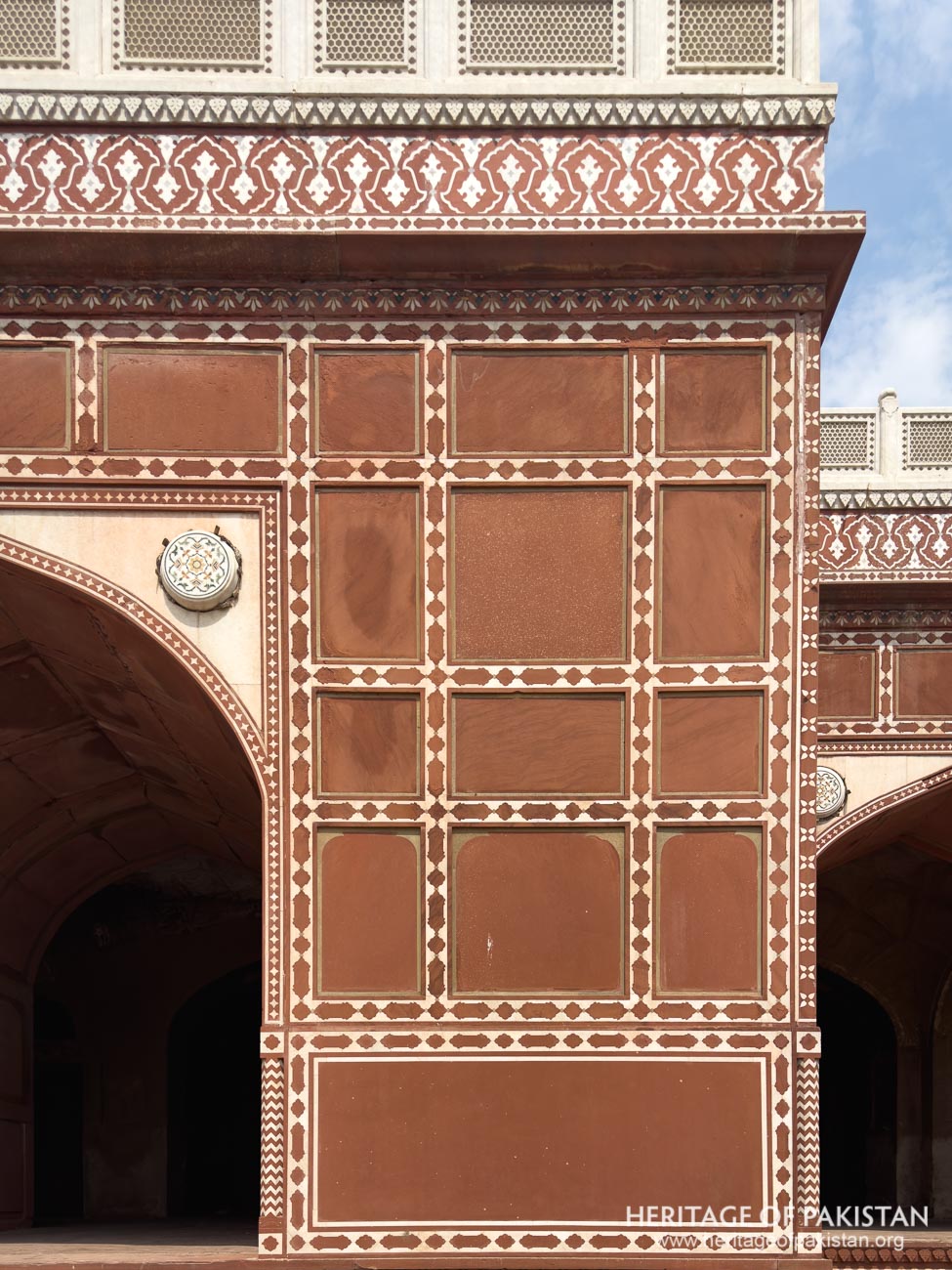
The Tomb of Nur Jahan appears to be a simplified version of the Tomb of Jahangir as the architectural elements are quite similar, the obvious missing features being the minarets of Jahangir's tomb. The Tomb of Nur Jahan, set on an elevated takht (platform), stands on a high base, providing the structure with prominence in its garden setting. This square tomb, measuring 40.84 meters on each side and standing 5.89 meters high, is constructed of striking red sandstone, a feature that enhances its visual impact within the surrounding greenery. Architecturally, it mirrors the flat-roofed design of Jahangir’s tomb, not including domes in favor of a vast, flat layout that draws focus to its intricate surface detailing.
The facade is adorned with red sandstone and decorated using Pietra Dura, or parchinkari, a technique in which polished, colored stones are inlaid to form intricate images and motifs. This decorative method, which became a hallmark of Mughal architecture, adds a layer of elegance through floral and geometric patterns. The tomb structure itself is a single-story building, featuring a balanced arrangement of seven arches on each side. A central arch serves as the focal point, with three flanking arches on either side, providing both symmetry and multiple entry points. Each corner of the structure is accented by cylindrical, bastion-like towers that protrude slightly from the main body, constructed and decorated in the same red sandstone style.
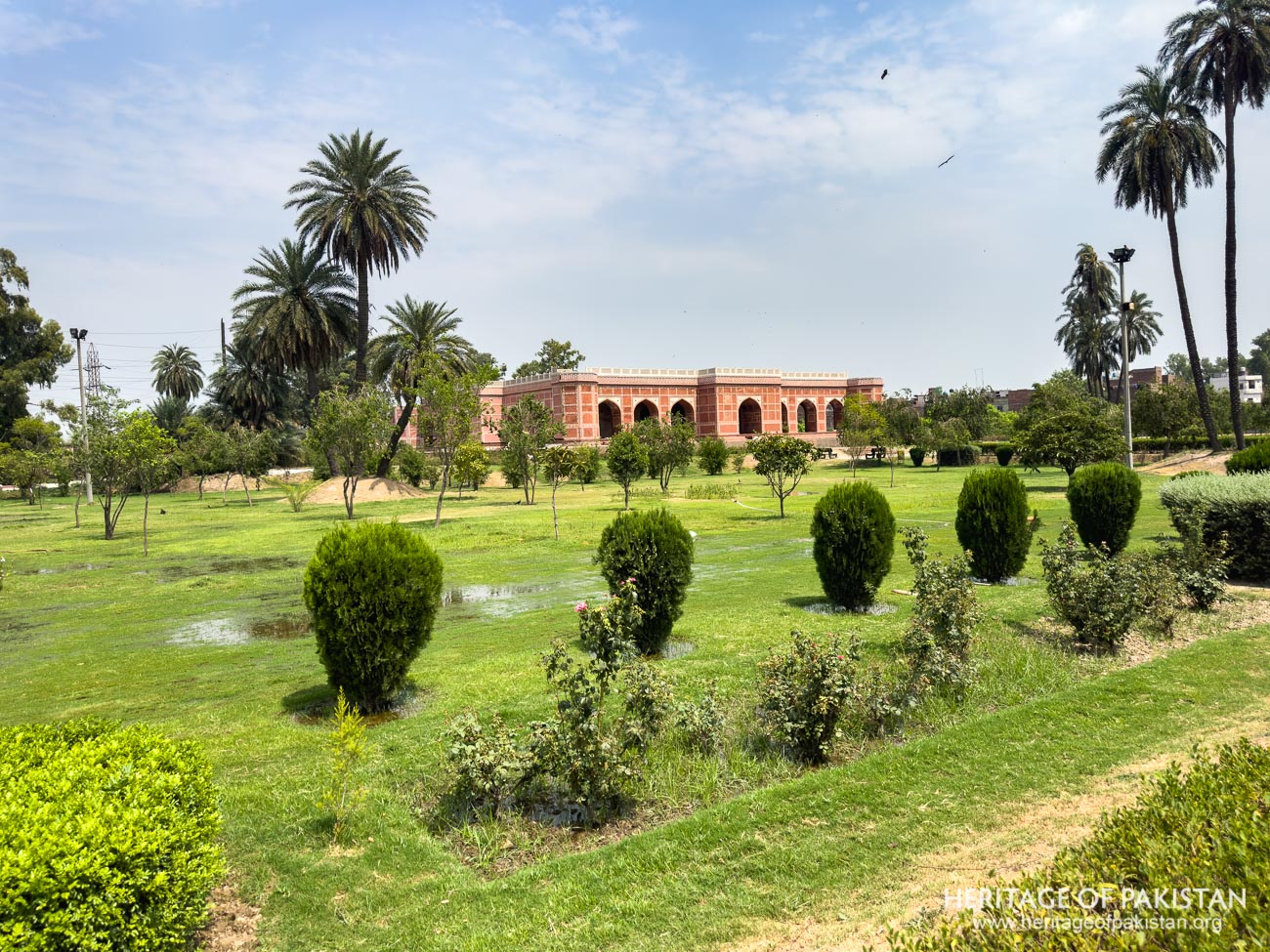
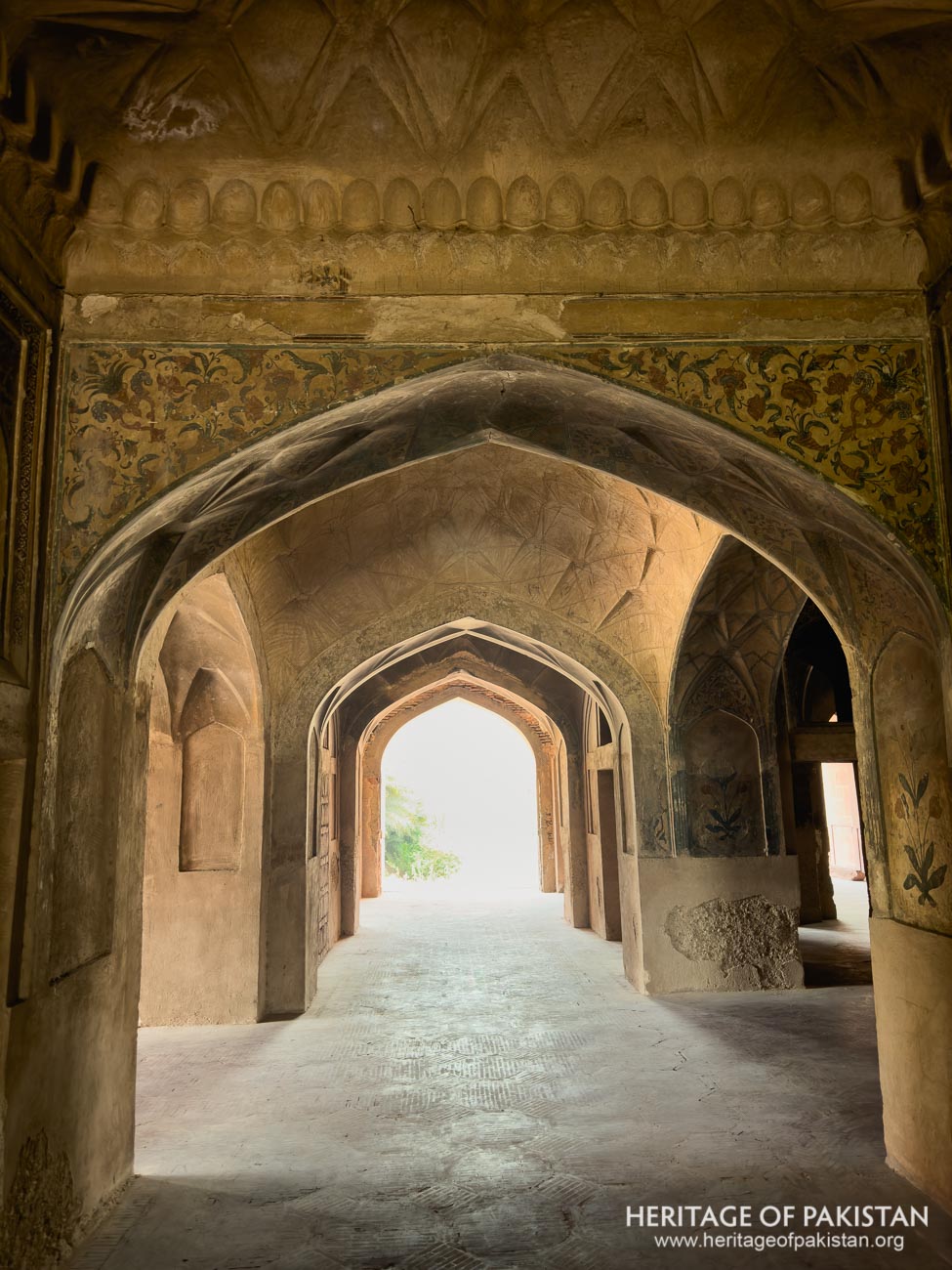
Inside, the tomb floor is paved in marble, with the interior chambers displaying vaulted ceilings. At the center are two marble cenotaphs: one for Empress Nur Jahan and the other for her daughter, Ladli Begum. The inner walls, once covered in marble and mosaics, reflect the luxury and attention to detail typical of Mughal tomb architecture.
Geographically, Nur Jahan’s tomb lies to the west of the Tomb of Asif Khan, separated by the Lahore-Rawalpindi railway line, which cuts through the original garden and disconnects the tomb from the larger Shahdara tomb complex. Historically, the tomb and its gardens were once linked to Asif Khan’s tomb through a western wall, now disrupted by the railway, altering the original spatial relationship between these Mughal monuments.
The tomb of Nur Jahan remains one of the most iconic and cherished architectural treasures of Mughal Era Lahore.
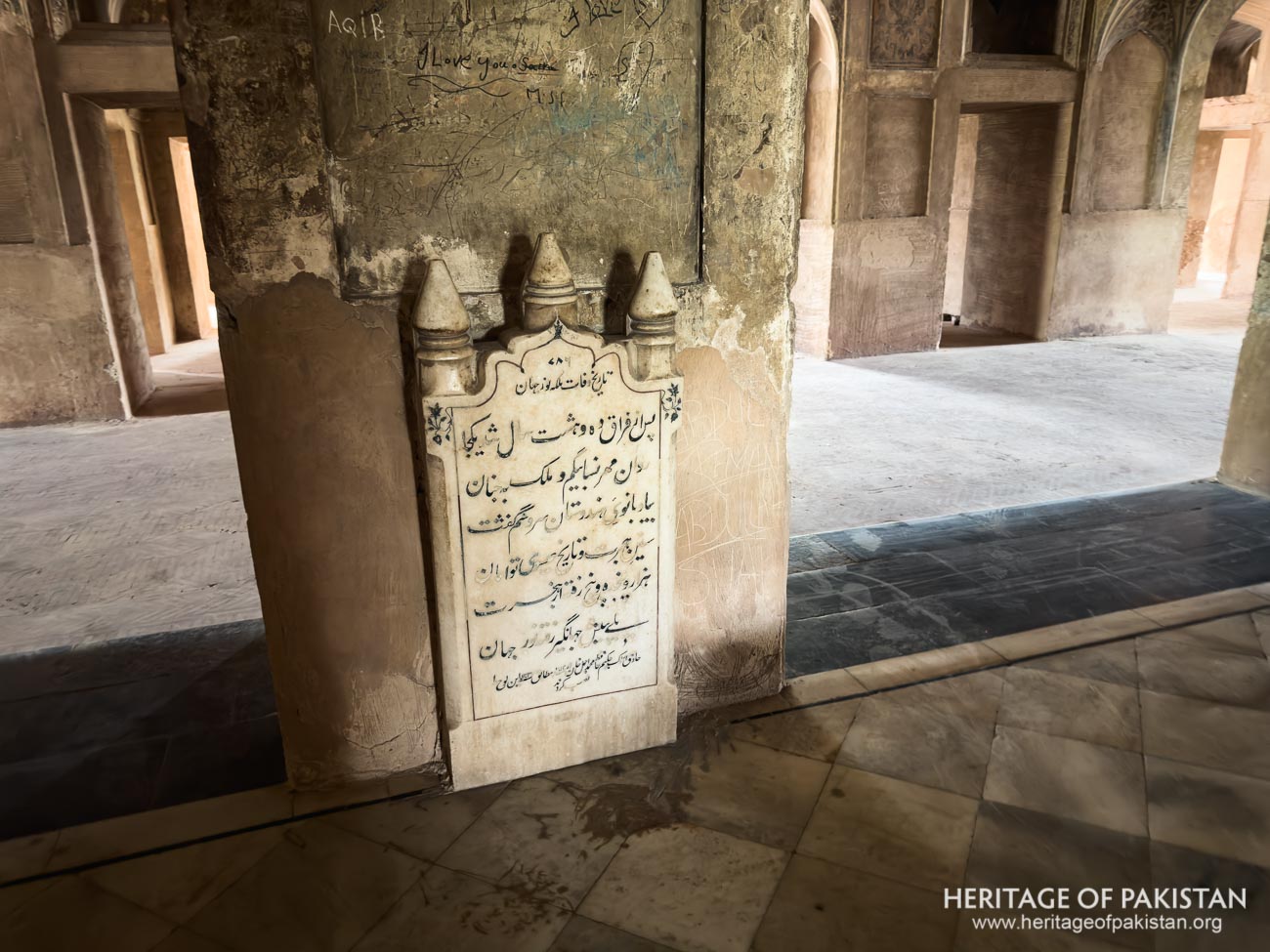
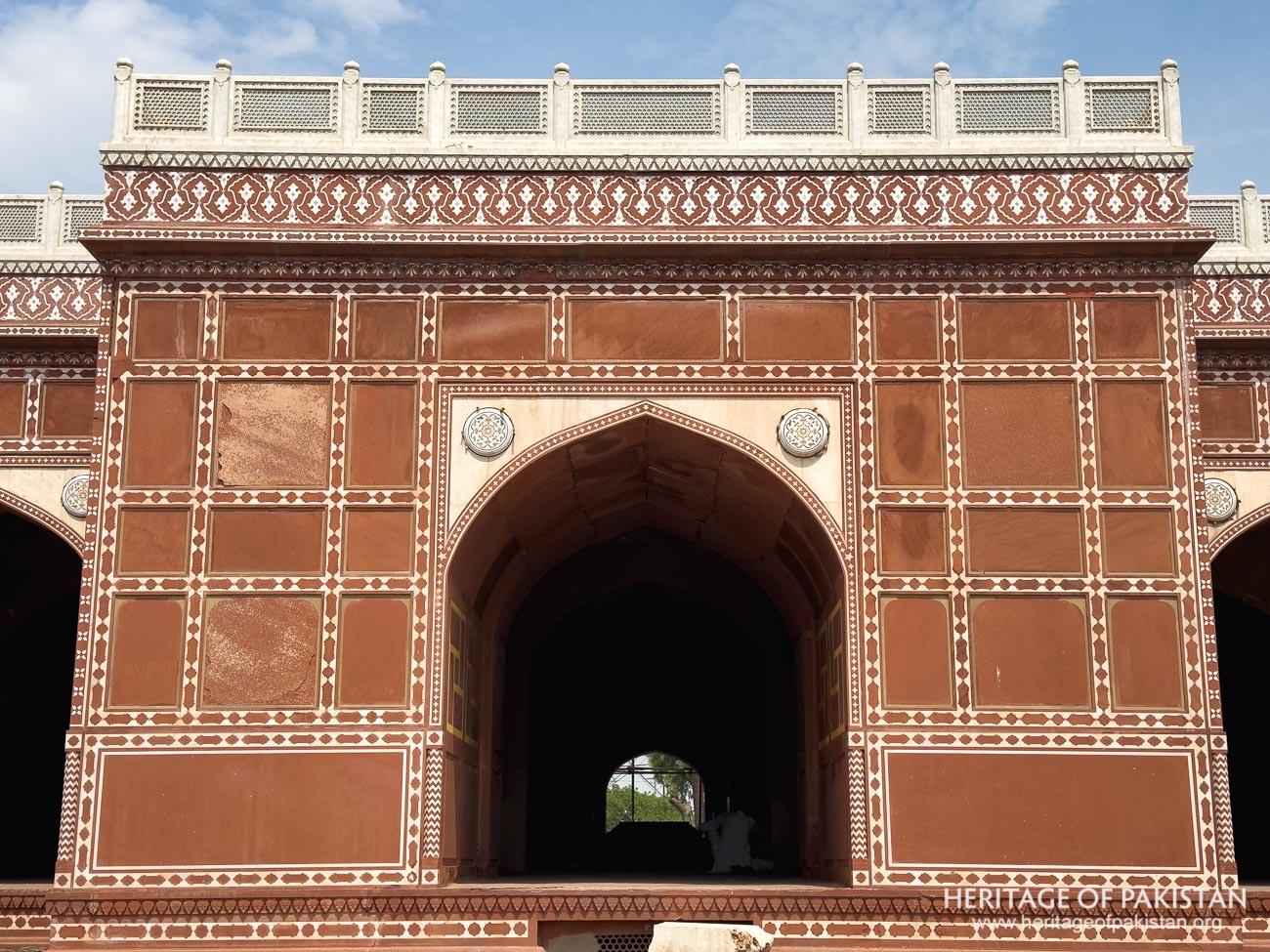
Discover the Nur Jahan's Tomb image gallery and immerse yourself in photographs

All Photographs by Syed Noor Hussain and Sania Azhar.
All Rights Reserved. Photos may be used for Non-Commercial, Educational, Artistic, Research, Non-Profit & Academic purposes.
Commercial uses require licensing agreement.


Add a review